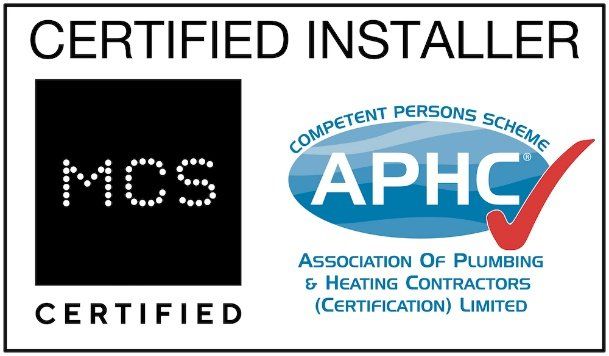If you have any questions, please feel free to call us on 07508 862 466 or email us at info@safplumbingandheating.co.uk and we will be more than happy to assist.
-
How much does an Air Source Heat Pump cost?
The cost of installation can vary greatly depending on various factors, including the property's size, age, and insulation levels, as well as the number of rooms and radiators. Most of our domestic installs are around £11,000 to £15,000, and it's good to know that the £7,500 grant can be deducted from that amount.
-
What is a Air Source Heat Pump?
Your refrigerators have been using heat pump technology for years, and it's amazing to see how that same principle is applied to air source heat pumps. It's interesting to note that air source heat pumps can "convert" electrical energy into heat energy, essentially harvesting the free energy from the air, which is replenished by the sun each day.
An air source heat pump is essentially a compact, outdoor unit that uses a fan to draw in air, which is then passed through refrigerant piping to extract and upgrade the heat energy, making it a convenient and efficient way to generate warmth.
The heat pump can multiply the electrical energy it consumes, producing up to 4 times more heat energy, making it a highly efficient and effective way to generate warmth. And the best part is that the "free" energy taken from the air is replenished daily by the sun, making it a renewable energy source.
-
How much energy will I save?
The potential savings of an air source heat pump can be substantial, and it's not just about the type of heating system you're switching from, but also factors like insulation and energy usage. Even with a gas boiler, significant savings can be made, and for those using oil, LPG, or direct electric heating, the savings could be even greater.
-
What areas do we cover?
We are based in Radcliffe On Trent (South Nottingha). We cover all of Nottingham, North Leicester and South East Derbyshire.
-
Do these systems work in freezing conditions?
The air source heat pump's ability to operate efficiently even in cold temperatures, down to -10C and potentially beyond -20C, ensures a reliable and consistent supply of warmth to your home, even on the chilliest of winter days.
-
How long does it take to install?
There are a number of factors that will affect this, however for a new-build home, the installation of an air source heat pump can be done in just a couple of days, making it a convenient and efficient option for homeowners.
For a refurbishment installation would require more planning and consideration, as it would depend on various factors such as the condition of existing radiators and water cylinders, as well as the location of the outdoor unit.
The installation process can also be influenced by the desired approach to integration with the existing heating system. A hybrid solution, which combines the new heat pump with the existing heating system, can be a more straightforward and cost-effective option, allowing homeowners to benefit from renewable energy while minimizing the necessary work.
-
Is an Air Source Heat Pump noisy?
The outdoor unit of the heat pump system does have a fan that draws air across the internal components, which can produce a whirring noise. However, the quality of the product can significantly impact the level of noise. The amount of noise depends on the quality of the product, we install the highest quality systems such as Vaillant that have earned a "Quiet Mark" certification, ensuring that noise is rarely a problem for our customers.
-
Do we need planning permission?
According to Permitted Development regulations, air source heat pumps must not produce a noise level exceeding 42dB(A) at a distance of 1 meter from a neighbor's nearest room.
The latest models of air source heat pumps offer significant improvements in terms of style, energy efficiency, and noise levels, with some being 3 times quieter than previous models, which virtually eliminates planning restrictions and makes them a more practical and acceptable solution for homeowners.
For large properties that require multiple air source heat pumps, planning permission is likely to be required due to the increased visual impact and potential noise disturbance.
-
How long does a Air Source Heat Pump last?
The average lifespan of a heat pump is typically around 15 to 20 years, but with proper maintenance and monitoring, it can be extended to ensure optimal performance and reliability.
-
Do the systems need to be maintained?
Heat pump owners can take a proactive approach to maintenance by cleaning the entire apparatus regularly, while also scheduling annual inspections with a qualified technician to check the condition of technical parts and identify potential issues before they become major problems.
-
Do I have to have a hot water tank?
A standard heat pump does not provide hot water on demand like a combi boiler, so it requires a storage tank to hold hot water for when it's needed. The size of the hot water cylinder needed depends on the household's hot water usage, but a typical cylinder can be fitted in a cupboard measuring around 80x80cm.
If space is limited, there are alternative solutions to consider. Hybrid systems combine heat pump heating with a boiler providing hot water on demand, while heat batteries are a compact option that can store hot water. Additionally, instantaneous hot water heaters can be installed under the kitchen sink to provide a smaller amount of hot water.




